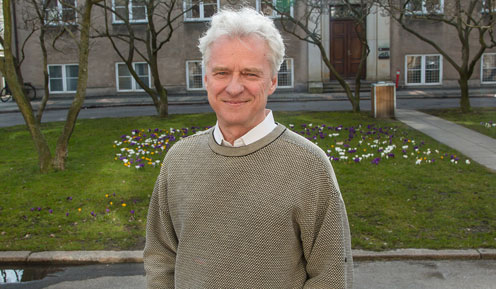Eugene Polzik receives Villum Investigator grant for pushing the boundaries of quantum mechanics
Eugene Polzik, head of the QUANTOP Laboratory at the Niels Bohr Institute, University of Copenhagen, receives 30 million from the Villum foundation to “push the boundaries of the quantum behavior towards larger and more complex systems” as he explains.

The Villum grant means increased scientific agility for an already agile research group
The Villum grant will allow Eugene Polzik to drive his current research to ever greater heights. Eugene Polzik’s group performs research over a wide array of different lines within quantum mechanics, and in some of those lines of research it will now be possible to make decisions on the basis of research and not economy. Thus, the grant will provide a much larger agility for the group, when it comes to pursuing their scientific goals. “We will strive to demonstrate manifestly quantum features for ever-larger, distant and disparate objects. This will, on the one hand allow for tests of possible boundaries of quantum mechanics, and on the other hand will lead to new applications” says Eugene.
One of the most important aspects, Eugene stresses, will always be to “bring up” the new generation of researchers, so hiring PhDs and postdocs in order to develop current projects will be of major importance.
Novel applications
Eugene’s group has filed a few patents already - on magnetic field sensing, which have already come close to use in biomedicine. Current and former students are pursuing these lines of research. Another application is the detectors of gravitational waves – Eugene and his colleagues have come up with a way to improve the extremely precise measurements of motion necessary for detecting the waves emitted from violent, astrophysical events such as supernovae or neutron star collisions. But still, “research is like a tree… you develop the stem, and from that stem branches form, and you can’t always tell in which direction they will grow, or which ones will bear fruit. But without the stem, no branches or fruit. So basic research is always the key component here”, says Eugene Polzik.
Before joining the Niels Bohr Institute in 2003 Eugene was with the California Institute of Technology and later with University of Aarhus, where he performed the first experiments on quantum interface between light and atomic objects. Since then the topic of using photons, the particles of light, for creating quantum links between macroscopic material objects has become central in his research. Quantum teleportation and measurements with precision, beyond what was thought to be hard limits set by quantum mechanics, have also been demonstrated by his group.
